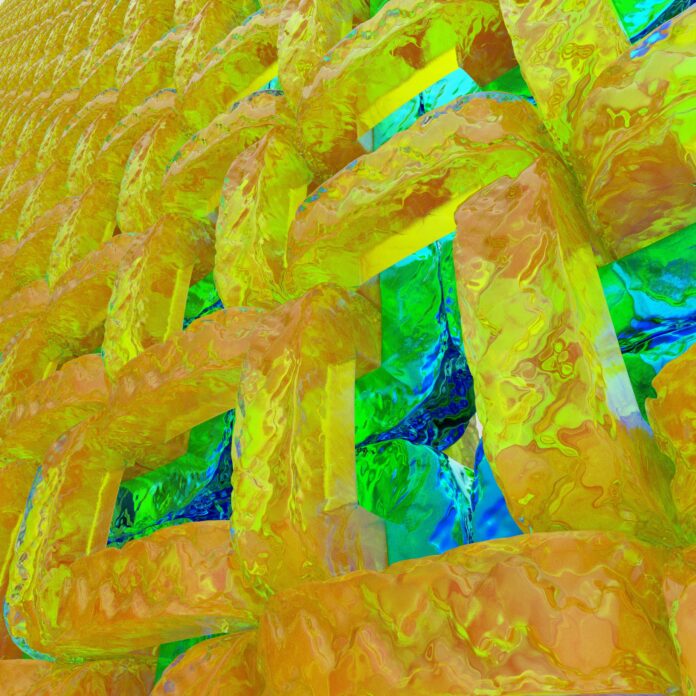Energy-Generating Bike Lanes: Paving the Way for Sustainable Transportation and Power Generation
In an era marked by rapid urbanization and increasing concerns about environmental sustainability, innovative solutions that merge technology, transportation, and renewable energy sources have gained substantial attention. One such ingenious concept that has captured the imagination of urban planners, engineers, and environmental enthusiasts alike is the development of energy-generating bike lanes. These innovative pathways not only serve as dedicated routes for cyclists but also harness the kinetic energy generated by the movement of bicycles to produce clean and renewable electricity. As cities strive to reduce their carbon footprint and seek alternative means of energy generation, energy-generating bike lanes have emerged as a promising step towards achieving both sustainable transportation and power generation.
The concept behind energy-generating bike lanes revolves around the utilization of piezoelectric technology. This technology capitalizes on the piezoelectric effect, a phenomenon in which certain materials generate electric charges when subjected to mechanical stress or pressure. By embedding piezoelectric materials beneath the surface of bike lanes, the pressure exerted by the movement of bicycles can be converted into electrical energy. This innovative approach effectively transforms the infrastructure of a city into a dual-purpose system, serving the needs of cyclists while also contributing to the generation of renewable energy.
The potential benefits of energy-generating bike lanes are multifaceted and extend across various domains. Primarily, these bike lanes offer a compelling solution to two of the most pressing issues faced by modern urban areas: sustainable transportation and clean energy generation. As cities strive to reduce air pollution, traffic congestion, and dependence on fossil fuels, promoting cycling as a mode of transportation has gained prominence. Energy-generating bike lanes provide a dedicated space for cyclists, encouraging more individuals to adopt this eco-friendly means of getting around. Moreover, by integrating energy generation into the act of cycling itself, these lanes incentivize the use of bicycles by creating a tangible link between personal mobility and environmental contribution.
The generated electricity from these bike lanes can be utilized in a multitude of ways, contributing to the city’s power grid and supporting various public amenities. From powering streetlights and traffic signals along the bike lanes to supplying energy to nearby buildings and facilities, the potential applications are diverse and impactful. This localized energy generation reduces the need for centralized power generation, which often relies on non-renewable sources and entails transmission losses. As a result, energy-generating bike lanes can significantly contribute to reducing greenhouse gas emissions and promoting a more sustainable urban energy infrastructure.
Furthermore, the implementation of energy-generating bike lanes can also serve as an educational tool and a symbol of innovation. These lanes visually demonstrate the concept of converting kinetic energy into electrical energy, offering an opportunity for public engagement and awareness regarding renewable energy technologies. Schools, universities, and educational institutions can incorporate these bike lanes into their curricula to illustrate scientific principles in action, fostering an understanding of clean energy concepts from an early age. Additionally, the presence of such advanced infrastructure reflects positively on a city’s image, showcasing its commitment to sustainability and technological progress.
As with any emerging technology, challenges exist in the widespread adoption of energy-generating bike lanes. The initial investment required for research, development, and implementation can be substantial, and securing funding for such projects might pose a hurdle for some municipalities. Moreover, the efficiency of energy conversion through piezoelectric materials is influenced by factors such as the quality of materials used, the design of the bike lanes, and the frequency of bike traffic. Optimizing these variables to maximize energy output while ensuring cyclist safety and comfort requires careful engineering and design considerations.
In conclusion, energy-generating bike lanes stand at the intersection of sustainable transportation and renewable energy generation, offering a promising solution to the environmental and energy challenges faced by modern cities. By transforming the kinetic energy of cycling into clean electricity, these innovative lanes not only promote eco-friendly transportation but also contribute to localized power generation. As cities continue to seek holistic approaches to urban planning that prioritize both environmental well-being and technological advancement, energy-generating bike lanes showcase the potential of merging innovation, infrastructure, and sustainability on the path to a greener future.
Energy-Generating Bike Lanes: Merging Sustainability and Innovation for Urban Progress
In an age defined by the imperatives of sustainability and the relentless march of technological progress, the emergence of energy-generating bike lanes stands as a testament to human ingenuity and the power of convergence. These pathways, woven seamlessly into the fabric of urban landscapes, transcend their utilitarian purpose, assuming the role of active contributors to the vitality and vibrancy of modern cities.
The genesis of this concept can be traced to the interplay of two pivotal elements: motion and transformation. As the wheels of a bicycle turn in rhythmic harmony with the rider’s effort, an intricate series of interactions unfold beneath the surface of the bike lane. Piezoelectric materials, carefully integrated into the very foundation of these paths, awaken under pressure, igniting a transformation that bridges mechanical movement and electrical energy. It is within these hidden layers that the true essence of energy-generating bike lanes comes alive.
This hidden synergy between motion and transformation draws a parallel to the quintessential spirit of urban life. Cities, much like these bike lanes, are ceaselessly in motion. The arteries of urban centers pulse with the movement of people, vehicles, and ideas, generating a kinetic energy of their own. Just as a cyclist navigates the twists and turns of a bike lane, cities maneuver through the labyrinthine dynamics of growth, change, and adaptation. Energy-generating bike lanes serve as a silent reminder of the latent potential that resides within the city’s rhythm, waiting to be harnessed for its benefit.
Beyond their technical prowess, these lanes weave narratives of sustainability and innovation. They silently advocate for a future where transportation ceases to be a mere means of movement, transforming into an act of conscientious contribution to a cleaner environment. With every pedal stroke, a cyclist becomes a steward of sustainable mobility, casting aside the emissions of traditional transportation for the humility of human-powered travel. In this narrative, energy-generating bike lanes become catalysts for a cultural shift, inviting individuals to embrace a lifestyle that harmonizes with nature.
Moreover, these lanes encapsulate a harmonious duality, where the visible and the concealed merge. The tangible presence of a designated space for cyclists, painted with vibrant symbols and designated lanes, sends a powerful message about prioritizing alternative transportation methods. This overt visibility fosters a sense of inclusivity and encourages individuals of all ages and backgrounds to partake in the cycling experience. In contrast, the intricate mechanisms beneath the surface operate silently, a testament to the beauty of quiet innovation. This duality mirrors the layers of a city itself—its visible skyline and bustling streets concealing the complex systems that make urban life possible.
An unexpected yet captivating facet of energy-generating bike lanes lies in their ability to stimulate curiosity and conversation. Like the intricate brushstrokes of a masterpiece, these lanes elicit contemplation and discussion. Passersby, drawn by curiosity, may pause to ponder the integration of science and infrastructure. Such moments of contemplation ripple outward, leading to conversations that transcend the immediate marvel and venture into discussions about sustainable cities, renewable energy, and the boundless potential of human creativity.
As urban landscapes evolve, so too do the challenges they face. Energy-generating bike lanes, while a commendable stride towards sustainable urban living, are not exempt from considerations of practicality, implementation, and maintenance. The integration of piezoelectric materials necessitates careful engineering, ensuring durability and safety. The financial investment required for research, development, and deployment often demands a delicate balancing act for municipal authorities. Yet, these challenges, akin to the inclines and descents of a cycling journey, contribute to the narrative of resilience that defines both cities and innovative projects within them.
In summation, energy-generating bike lanes symbolize far more than their functional utility. They encapsulate the harmonious convergence of human movement and technological transformation, embodying the essence of sustainable urban living. These lanes whisper stories of progress, of cities striving to recalibrate their relationship with the environment. They encourage a narrative of connectivity—not just between destinations, but between individual actions and global impact. As cities pedal towards a future defined by cleaner energy and conscientious living, energy-generating bike lanes stand as sentinels of possibility, reminding us that even the simplest of actions can be harnessed to illuminate the path towards a brighter tomorrow.
In the heart of our bustling urban landscapes, a silent revolution is unfurling beneath our feet, where innovation meets pragmatism in a fusion that challenges the conventional paradigms of transportation and energy generation. Energy-generating bike lanes, an embodiment of this contemporary marriage between technology and sustainability, are redefining the role of infrastructure in our cities. As the sun rises over these pathways each day, a symphony of human motion and scientific ingenuity begins, weaving a narrative that extends far beyond the utilitarian functions these lanes serve.
Consider for a moment the ceaseless movement that characterizes city life—the ebb and flow of people navigating their daily routines. Within this kinetic rhythm lies the untapped potential to address some of the most pressing issues of our time. These bike lanes, with their unassuming surfaces, hold the key to unlocking a latent energy source, harnessed not from distant power plants but from the very essence of human mobility. This integration of energy generation into our daily activities heralds a paradigm shift, where the ordinary becomes extraordinary and the mundane is transformed into an act of conscious contribution.
As urban dwellers traverse these lanes on two wheels, they become unwitting participants in a grand experiment—a testament to how the convergence of diverse disciplines can spark a new era of sustainability. The fusion of mechanical engineering, material science, and urban planning births a space where the laws of physics intertwine with the aspirations of humanity. The vibrations of rolling tires translate into a dance of electrons, an intricate exchange that bridges the gap between personal movement and the broader tapestry of urban dynamics.
Perhaps what distinguishes energy-generating bike lanes most profoundly is their ability to render the abstract notion of renewable energy tangible and experiential. The hum of tires against the pavement becomes a tangible reminder that the act of commuting can be transformative, not just for the individual but for the environment as well. The concept of harnessing energy from motion—a concept often relegated to the realms of physics textbooks—takes on a visceral reality as cyclists traverse these lanes. In this way, the lanes serve as ambassadors of education, evoking a curiosity that extends beyond their immediate purpose.
It’s remarkable how the mere act of cycling can serve as a bridge between the individual and the collective. As cyclists propel themselves forward, they become integral cogs in a larger machine, generating not only personal momentum but also contributing to a communal pulse of energy. This subtle interconnectedness carries a powerful message—one of unity and shared responsibility. As cities embrace these lanes, they not only invest in sustainable infrastructure but also in a narrative that encourages citizens to view themselves as active agents of positive change.
Energy-generating bike lanes mirror the essence of cities themselves, each layer of their design reflecting the complexity of the urban ecosystem. Beneath the surface, the hidden world of piezoelectric materials and electrical networks mirrors the intricate labyrinth of infrastructure that keeps cities running. Just as a cityscape combines the visible and the concealed, these lanes exist as a harmonious duality, offering both a tangible path for cyclists and an invisible conduit for energy conversion. This parallel serves as a reminder that beneath the surface of every city, there are layers of complexity and untapped potential waiting to be discovered.
As the sun sets and the city’s pace gradually mellows, these energy-generating lanes continue their quiet work, mirroring the city’s relentless energy even in its moments of reprieve. They embody the essence of innovation—an unwavering commitment to progress that persists even when the spotlight fades. In these lanes, the spirit of invention thrives, a constant reminder that the intersection of disciplines can birth solutions that transcend the sum of their parts. It is a testament to human creativity, where the imagination is given room to roam freely and dreams are given the opportunity to manifest in the form of tangible change.
In a world where the discourse often revolves around grand gestures and monumental transformations, the significance of incremental change can be overshadowed. Yet, it is through these incremental steps that societies progress, forging a path towards a future imbued with consciousness and sustainability. Energy-generating bike lanes stand as beacons of possibility, illustrating that even the simplest of actions, like riding a bicycle, can contribute to a larger narrative of environmental stewardship.
In closing, these unassuming lanes tell a tale of urban evolution—an evolution that encompasses both the evolution of thought and the transformation of daily actions into meaningful contributions. They challenge us to perceive infrastructure as more than concrete and steel, as conduits that carry not only people but also the promise of a greener tomorrow. With each pedal stroke, they harmonize the aspirations of a sustainable future with the realities of modern life, creating a space where innovation and everyday existence coalesce in a symphony of progress.






















